Herbs for Kids: Safe, Simple Remedies to Make Together
Written by Juliet Howard with Juliet Blankespoor
Photography by Juliet Howard unless otherwise credited
Illustrations by Danielle Barlow
It’s not every day I get to introduce another Juliet—but today I am delighted to share the work of Juliet Howard, a mother, author, and herbalist, much like myself.
In this “Herbs for Kids” article, Juliet offers tender stories of parenting with herbalism, along with gentle recipes and creative activities that children will love. From soothing first-aid remedies to playful projects that spark curiosity, her words remind us that raising children with herbs is not only practical but also a way of passing on plant-based knowledge.
So with pleasure, I’ll let Juliet Howard’s voice carry the story forward.
– Juliet Blankespoor

A quiet moment with nature can spark a lifelong love for plants. Photo by Kyle Nieber on Unsplash.
Opening children up to a world of wonder and magic is as easy as introducing them to the plants.
Creating a life among the green world is both empowering and full of depth. Read on to learn about simple ways to connect with plants, herbs that are helpful for children, first aid preparations, and herbal recipes you can make together.
When you know the plants, you always have friends. Years ago, I went on a retreat in England where I didn’t know anyone in the group. Shortly after arrival, I thought I had made a huge mistake and figured I’d need to hop on the next flight out. But I took a deep breath and ventured out onto a walk in the rolling green hills nearby. Soon after, I saw mugwort popping up everywhere, walked under hawthorn branches, smelled lemon balm, and saw sweet sprigs of red clover emerging in the meadow below my feet. I felt at home. I felt loved. I felt seen. My friends were here, and I knew I could get through anything. And the trip ended up being a magical and restorative moment in time.
Getting to know a plant isn’t quite the same as getting to know a person, but there are some commonalities: It’s important to spend time together, engage in reciprocity, and listen with an open heart.
When we take the time to sit with a plant, to allow ourselves to slow down, to hug a tree, to lay down in the grass, we give our bodies permission to rest. We allow our vibration to sync with the vibration of the earth, which operates at a much slower, more resonant pace.

Hands-on moments with the green world nurture both learning and love for plants. Photo by Aedrian Salazar on Unsplash.
How to Share Herbalism with Children through Attunement
When we connect with plants, we also connect with ourselves. A trust begins, a true knowing, a strengthened intuition, and a deep sense of self. When we co-create, dream, and engage deeply with plants, we open up a portal to the unseen world—where there is magic in the mundane, a space of depth and spirituality, and where the mystery remains alive and well. This seemingly magical space is easily accessed when we slow down and feel the more-than-human beings that surround our lives.
Having my own deep relationship with the plants made me want to ensure that my daughter also formed her own relationship with the green world. From the time she was crawling around in the grass, I was showing her dandelions and red clover, mugwort and roses. I was slathering calendula salve on her and giving her elderberry juice and tulsi tea.
Even as a toddler, she would wave to her plant friends, smell them, taste them, ask for their medicines, and pick them for potions. Knowing that my daughter has formed her own kinship with the plants gives me a sense of ease—for I know that she will never feel alone and she will hold the wisdom of how to nourish, heal, and care for herself, with the help of her plant friends. This feels like one of the best gifts I can give her as a parent.
If you feel inspired to start fostering deeper relationships between the children in your life and the plants, plan a Plant Picnic day where you can pack a delicious lunch, grab some notebooks and colored pens or pencils, and engage in a few of the activities below.
Breathe with a Plant
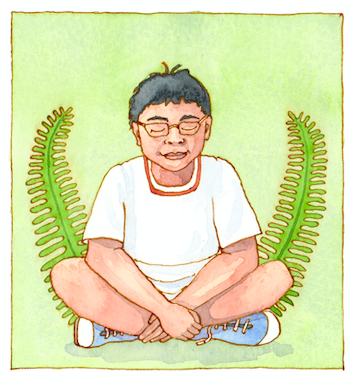
Draw a plant

5 Senses
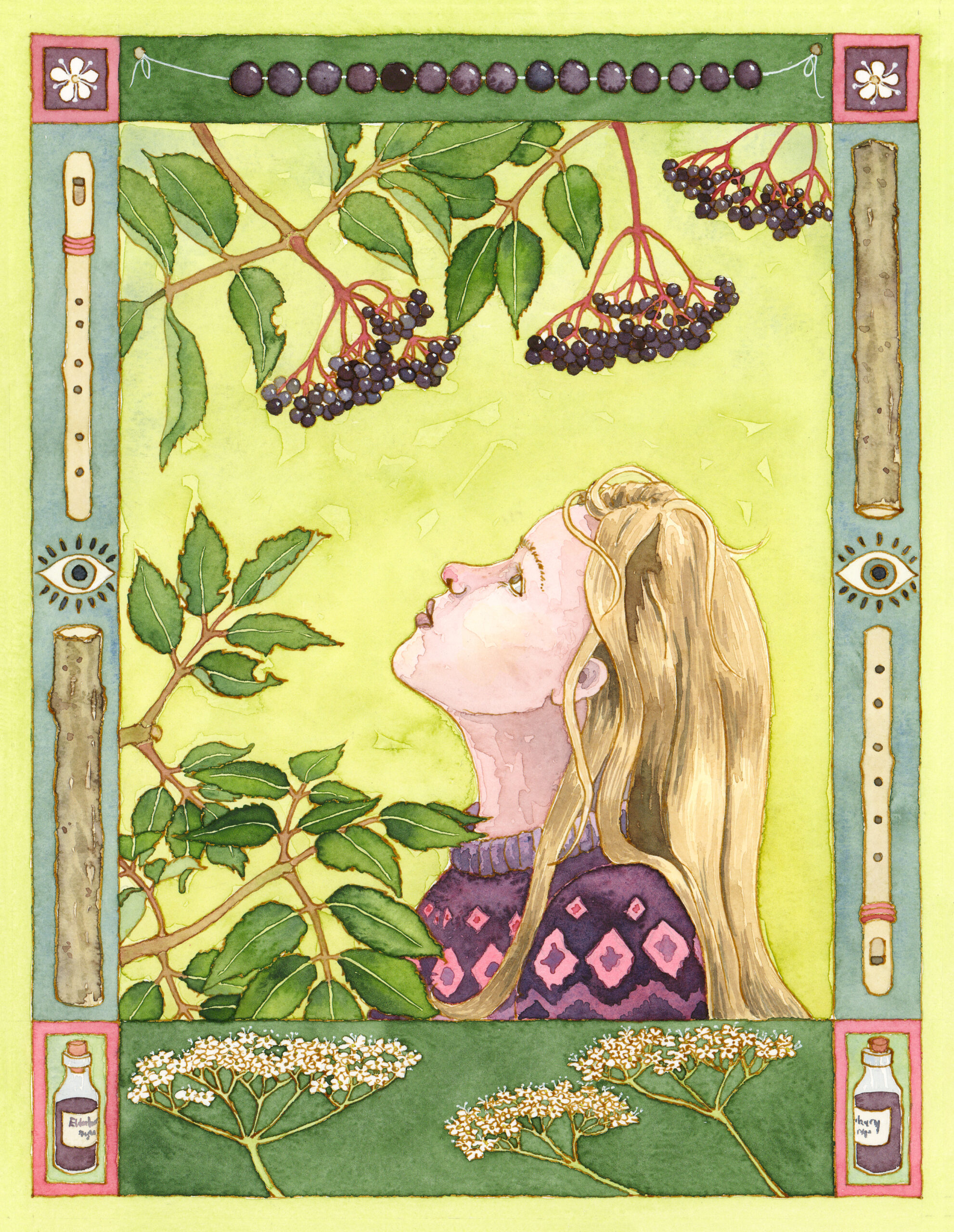
Sacred Plant Bath

Make Your Own Herbal Grimoire

Some other fun ideas:
- Cook with plants
- Visit the same plant or tree in every season
- Plant seeds to study the lifecycle of a plant
- Make a plant dye for fabrics
- Create a moon garden
- Make an herbal honey
- Blend your own sun tea infusion
- Make flower confetti
- Try some edible flowers
- Download some coloring pages from The Girl Whose Garden Comes Alive by Juliet Howard & Danielle Barlow
Let’s Meet the Plants + Make Some Magic Together
Now that we have learned some ways to connect with plants, let’s meet some plants that are especially wonderful for children, as they are gentle, nourishing, and endlessly helpful.
Lemon Balm
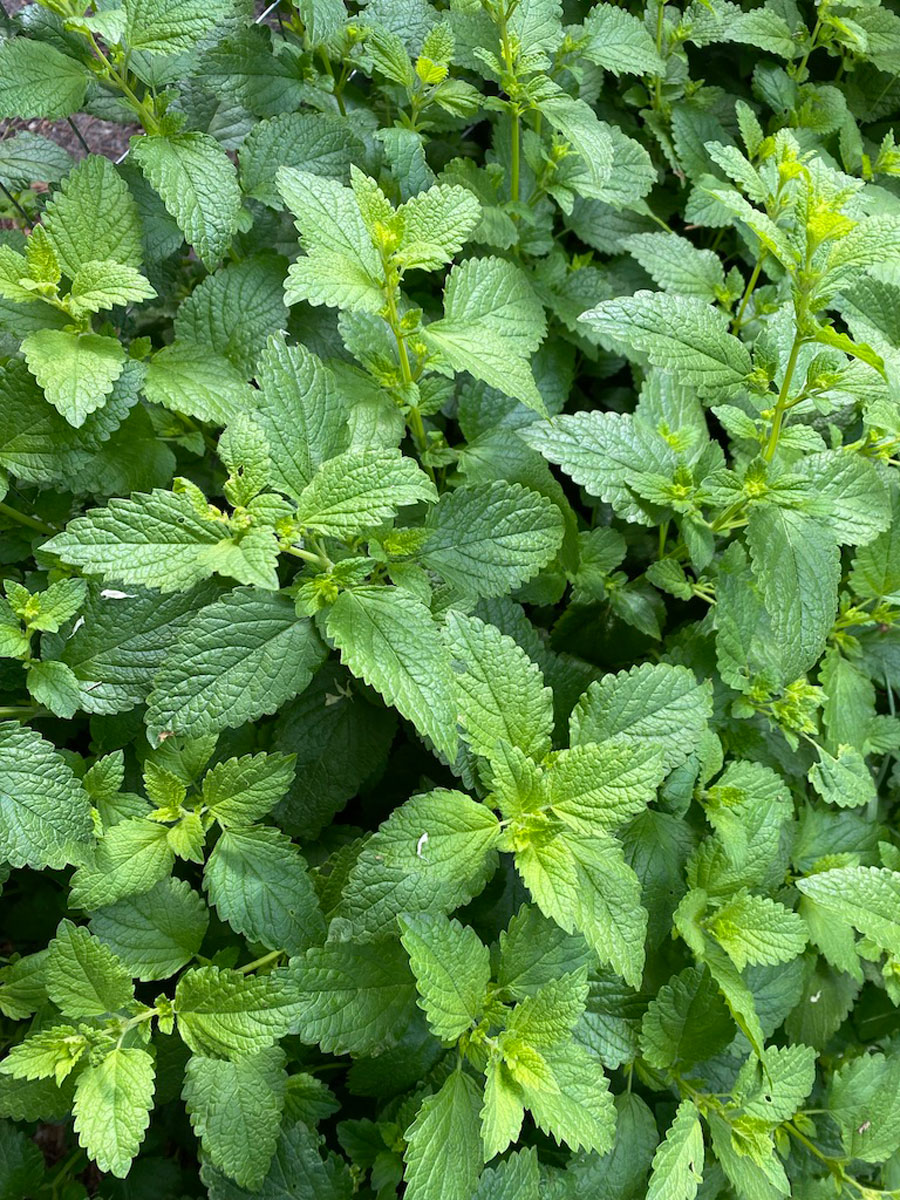
This citrusy green-smelling leafy wonder is a beautiful plant to get to know. It naturally calms the soul and helps uplift the spirit in times of melancholy. Lemon balm makes a delicious infusion, syrup, or lemonade.
Lemon balm is such a welcome sight in the garden. It’s one of the first herbs that pop up in the early spring, heralding its citrusy scent and acting as a beacon for the season. Once the stalks are full of fresh, young, bright green leaves, I have a sunny spring day tradition—I always make a sun tea.
I gather a few handfuls of leaves and place them in a big half-gallon jar, fill it with spring water, and let the sun work its magic. The infusion doesn’t tend to get hot like it does in the summer months, but the sun’s magic still helps the lemon balm infuse into the water, creating a drink that is both sweet and sour, fresh and enlivening. I often ice it afterward, and it’s one of the most refreshing drinks of the season. Another thing you can do with your lemon balm sun tea is make a delicious lemon balm lemonade.
Leafy Lemon Balm Lemonade
Ingredients
- 1 cup fresh lemon balm leaves (or ⅓ cup dried)
- 1 quart water preferably spring or filtered
- ½ cup fresh-squeezed lemon juice
- ½ cup raw local honey approximately or to taste*
Directions
- First, you’ll want to make a light infusion of lemon balm by adding the leaves to a French press, stainless steel pot, or teapot and pouring just boiled water over them (Safety note: some herbalists use mason jars for their infusions, but this is not a recommended practice, as mason jars sometimes have cracks and can break when exposed to boiling water.)
- Let this steep for 7-10 minutes, then strain out the leaves
- Next, add fresh-squeezed lemon juice and honey
- Mix everything up until the honey has dissolved
- Place this lemonade in the fridge so it can cool
- When you’re ready to serve, pour over ice and add a little sprig of lemon balm to each glass
Notes

Yarrow
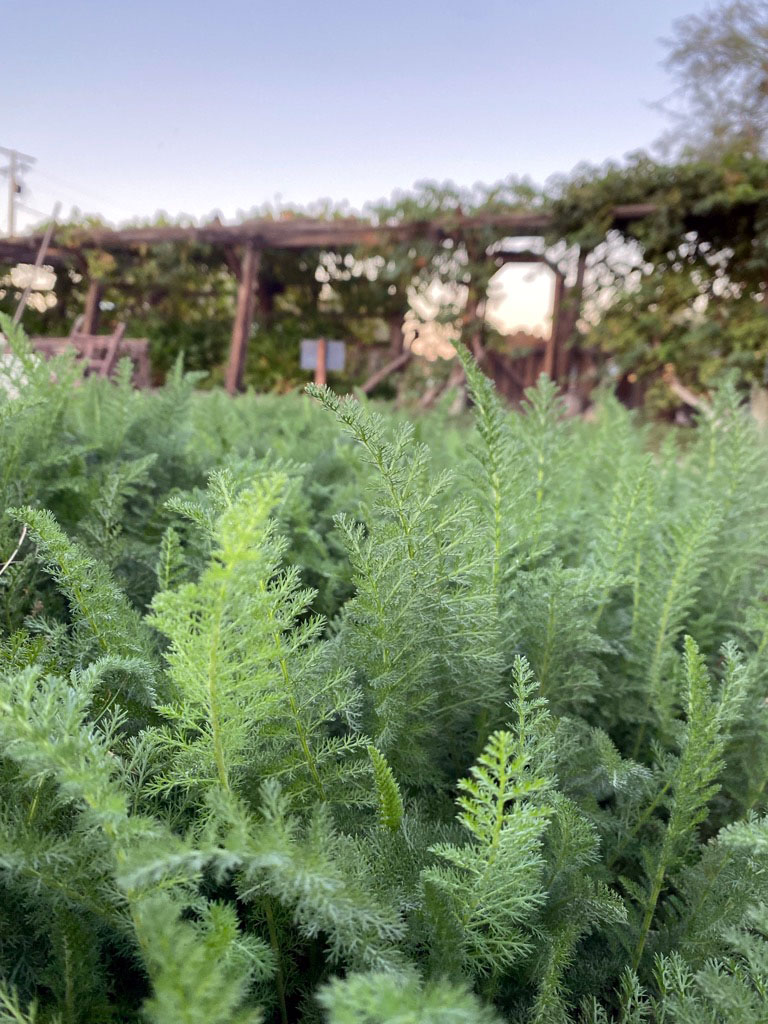
A great plant to know in the garden, yarrow possesses many wonders, but its ability to stop bleeding is unmatched. If you have a bleeding wound from a cut, you can work with yarrow leaf and flower to stop the bleeding. Yarrow is also a very protective guardian plant.
Yarrow has been a lifesaver for me—a plant that I will always grow just outside my door. Years ago, on my daughter’s first Thanksgiving, I was making an appetizer with our immersion blender and somehow, I nearly severed my first finger. I know—gross… But, the first thing I did was run to the garden and pack the bleeding wound full of yarrow leaves that I had quickly chewed up into a paste before placing on the open wound.
I then wrapped my finger in a towel and headed to the emergency room. The doctor was quite impressed with the styptic powers of yarrow (as he should be), and I left with some stitches and an even greater appreciation for my dear friend, yarrow.
If you’re ever in a similar bind (I hope you aren’t!), you’ll want yarrow nearby, and if you can’t find it fresh, it’s great to have yarrow powder in your herbal first aid kit.
Yarrow First Aid Powder
Use yarrow powder to help stop bleeding or when yarrow isn’t in season or close by. If applied to a deep wound in an emergency, be sure to thoroughly irrigate and remove any plant material to prevent infection and ensure proper healing.
To make yarrow powder:
• First, harvest yarrow leaf and flower
• Next, you’ll let it dry out – you can do this by hanging it upside-down for a couple of weeks
• Once it’s sufficiently dry, you can powder it in a coffee grinder
• Next, use a mesh strainer to shake out all of the fine powder
• Place the powder in a glass jar, label it, and keep it in your herbal first aid kit

Children naturally lean into wonder and plants are perfect teachers. Photo by Paula Corberan on Unsplash.
Plantain
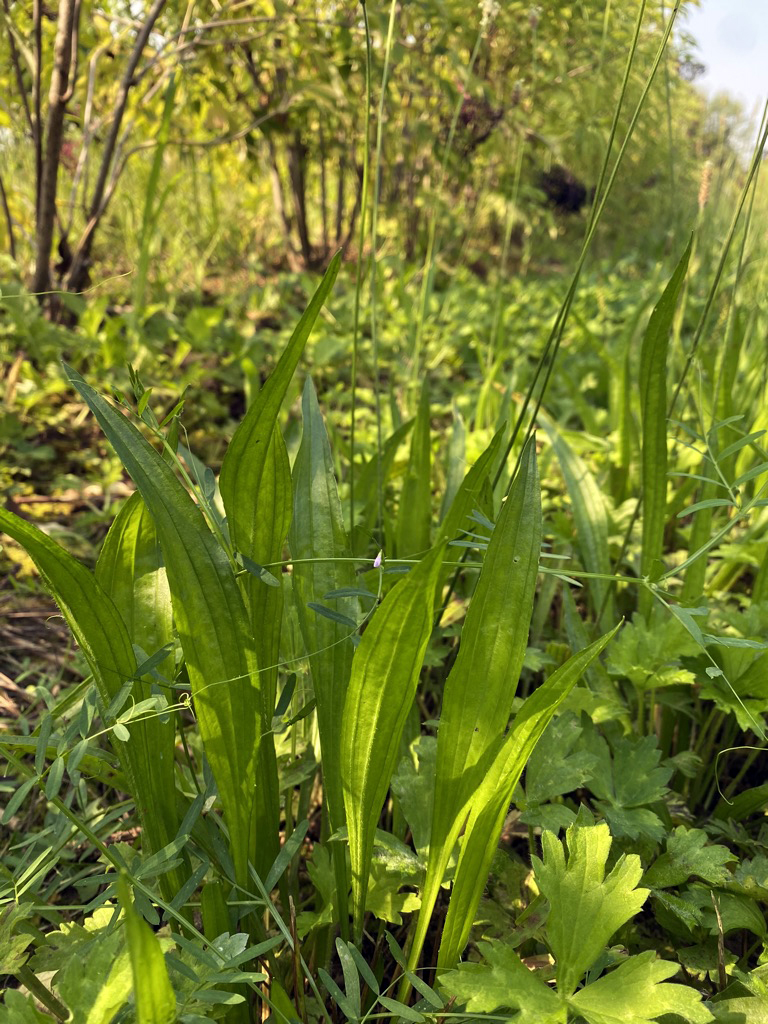
Plantain is the plant to reach for when you get a bee sting! Knowing how to locate this plant is crucial in times of need. Plantain is soothing and kind to the skin, quickly alleviating any burning or stinging. Because of its healing magic, the day after your sting, you’d never know it even happened!
Plantain has a special place in my heart because it remains one of four main characters in my daughter’s first story. When she was two years old, we were on a hike, and she got her first bee sting. She was picking a juicy blackberry and got stung on the base of her tiny thumb. Her dad had ice in his water bottle that he quickly placed on the sting as I went on a mad dash to find plantain.
For some reason, on this day, plantain was nowhere to be found (which is very rare!). But I kept looking and eventually found a beautiful patch. I immediately picked a leaf that I quickly chewed up and placed gently onto her sting. Her shock and dismay subsided almost immediately, and from then on, she told the story of her bee sting to anyone who would listen.
If you ever get a bee sting or a bug bite, here is a simple yet effective preparation to ease the pain and reduce swelling:
Spit Poultice
A poultice is made by mashing up plant material and placing it on a wound. In a pinch, the simplest way to do this is to use the spit poultice method.
• First, you’ll pick the part of the plant you’re going to use – for plantain, this would be the leaves
• Next, chew up the leaves into a bit of a paste (this breaks up the plant’s cell walls and unlocks all the healing goodness), and place the plant paste on your wound. The person receiving the poultice should be the one to chew it if they are old enough to safely chew plant material.
• Leave it there as long as you can to let the plant work its healing magic (I often adhere a bandage over the plant material so it will stay put for a while).

Calendula’s sunny blooms captivate plant lovers of all ages. Photo by Juliet Blankespoor.
Elderberry

Though elderberries cannot be eaten raw, they are a wonderful plant ally to get to know. The juicy, deep purple berries often arrive in late summer to early fall and are effective for supporting the immune system. They are high in antioxidants and vitamin C, and also happen to be delicious!
Elder is one of those plants that is pure magic—a shape-shifter—producing bountiful ivory blooms in the spring that gently transform into juicy, deep purple berries near the end of summer.
Immune Boosting Elderberry Popsicles
Ingredients
- 2 cups fresh elderberries
- 2 cups water
- Optional sweetener (honey*, maple syrup) to taste
- Apple juice, coconut water, or whatever juice you enjoy to taste
Directions
- To begin, you’ll remove the fresh berries from the stems. This is easiest when the berries are frozen.
- Next, place the berries in cold water to remove any stems, debris, and unripe berries that you may have missed in the first step.
- Add the elderberries and water to a pot and bring the mixture to a boil. As soon as it boils, reduce the heat to a simmer for at least 10 minutes. (Boiling for 10 minutes is essential for destroying the cyanogenic glycosides found in fresh elderberries that can cause digestive distress.)
- Once the liquid takes on a deep purple color and the elderberries have all softened, use a spatula or potato masher to push on the berries so they can release any remaining liquid. Simmer for another 7 minutes.
- Remove the pot from the heat and let the mixture cool. Strain it through a fine-mesh strainer and continue to press the berries to release any excess liquid. You can compost the leftover pulp of the berries (or turn it into fruit leather).
- Elderberry tea is rich and tart, so you may want to add some honey* or maple syrup.
- Now that you have your elderberry tea, to make the popsicles, you’ll want to fill the popsicle mold halfway with elderberry tea and then the rest with apple juice (or whatever unsweetened juice you like).
- Freeze for at least 5 hours. De-mold and enjoy!
Notes
- You can pour any leftover elderberry tea into clean glass jars and store in the fridge for up to 3 days or in the freezer for 6 months or more.
- The tea is great on its own, added to fizzy water or mocktails, or mixed with other juices.

Teaching children about the wonders of the green world living around us is an essential need at this time. The plants provide nurturance, nourishment, kinship, and a true sense of belonging. When you know the plants, you’re never alone. This season, I hope you find many moments to share time with the plants in the kitchen and in the garden.
Children’s Health Safety Notes for Parents and Caregivers
You are your child’s best advocate and greatest comfort. If your doctor or health care provider says or does something that just doesn’t seem right, speak up. Trust your gut. You have valuable insights into your child’s health that can benefit your health care provider’s decision-making or diagnosis. If your health care provider doesn’t answer your questions, doesn’t value your insight, or at all belittles your opinion, find another provider! Here are a few scenarios in which we recommend seeking conventional medical care. Sometimes, we need care other than herbal home remedies. Be careful not to let natural health dogmatism compromise anyone’s health!
Please call your doctor or seek emergency medical care for any of these potentially serious symptoms:
- Pronounced lethargy, with or without a fever. If your child is totally disinterested in playing and/or eating food and just seems seriously “off,” call your doctor.
- Fever over 100.4°F (38°C) in a young baby (under three months old).
- High fever over 103.5°F (39.7°C) or persistent fever (for more than three days).
- Difficulty breathing, with rapid, shallow breathing and wheezing sounds.
- Persistent or extremely painful earache, sore throat, severe headache, or stomachache.
- A red streak emanating from a wound.
- Frequent vomiting or diarrhea can quickly lead to dehydration, especially in infants. If your child hasn’t urinated at least once every 8 to 12 hours, they may be dehydrated. Other symptoms of dehydration include a lack of tears when crying, dry mouth, soft fontanel (soft spot on a baby’s skull), and sunken eyes. Blood in the vomit or in diarrhea is also cause for concern.
- Fever, stiff neck, and headache are symptoms of possible meningitis. A child with meningitis often exhibits only two out of the three previously listed symptoms. In babies, a bulging fontanel (soft spot) can be an indicator of meningitis or other potentially serious conditions. When an infant is crying, lying down, or vomiting, the fontanel may bulge, but it should return to normal when the infant returns to a calm, head-up position. Immediate emergency care is called for if any infant exhibits a bulging fontanel, especially with lethargy or fever.
Determining Dosage in Children by Weight
To determine the child’s dosage by weight, you can assume that the adult dosage is for a 150-pound adult. Divide the child’s weight by 150. Multiply that number by the recommended adult dosage.
The Girl Whose Garden Comes Alive, written by Juliet Howard and illustrated by Danielle Barlow, is a charming chapter book where plants whisper secrets and gardens brim with magic. Through Freyja’s adventures, children discover the healing gifts of herbs, simple recipes, and the joy of seeing nature as a trusted friend.
We’d love to hear from you—what herbal adventures or plant-based projects do you enjoy with your little ones? Let us know in the comments!
Meet Our Contributors:

JULIET HOWARD is an herbalist, mother, musician, and medicine-maker with a lifelong love of the wild. She first discovered plant magic as a child growing up on the rugged cliffs of the Oregon coast, and her herbal practice is rooted in deep reverence for the green world. Juliet believes plants are portals into the wonder of being fully alive and embodied.
Discover her book at thegirlwhosegardencomesalive.com and connect with her on Instagram at @daymoon.botanicals.

DANIELLE BARLOW is an artist, illustrator, intuitive herbalist, oracle creator, incense maker, stitch witch, and traveller on the spirit roads.
A dreamer deeply rooted in the ancient landscape of Dartmoor, Danielle’s work draws heavily on folklore and mythology, as well as a personal magical practice, to explore the profound connections—both physical and spiritual—between people and the land they inhabit. Across all of its threads, their work is, at its heart, a prayer to the numinous world around us.
Connect on Instagram at @daniellebarlowart.

JULIET BLANKESPOOR is the founder, primary instructor, and Creative Director of the Chestnut School of Herbal Medicine, an online school serving thousands of students from around the globe. She's a professional plant-human matchmaker and bonafide plant geek, with a degree in botany and over 30 years of experience teaching and writing about herbalism, medicine making, and organic herb cultivation. Juliet’s lifelong captivation with medicinal weeds and herb gardening has birthed many botanical enterprises over the decades, including an herbal nursery and a farm-to-apothecary herbal products business.
These days, she channels her botanical obsession through her writing and photography in her online programs, on her personal blog Castanea, and in her new book, The Healing Garden: Cultivating and Handcrafting Herbal Remedies. Juliet and her family reside in a home overrun with houseplants and books in Asheville, North Carolina.
Interested in becoming a contributor?
© Chestnut School of Herbal Medicine and chestnutherbs.com, 2011-2025. Unauthorized use and/or duplication of this material without express and written permission from this site’s author and/or owner is strictly prohibited. Excerpts and links may be used, provided that full and clear credit is given to Chestnut School of Herbal Medicine and chestnutherbs.com with appropriate and specific direction to the original content.
Want to take a deeper dive into medicinal herbs and their uses?
Our 1,200-hour Herbal Immersion Program is the most comprehensive handcrafted online herbal course available, covering botany, foraging, herb cultivation, medicine making, and therapeutics.







0 thoughts on “Herbs for Kids: Safe, Simple Remedies to Make Together”